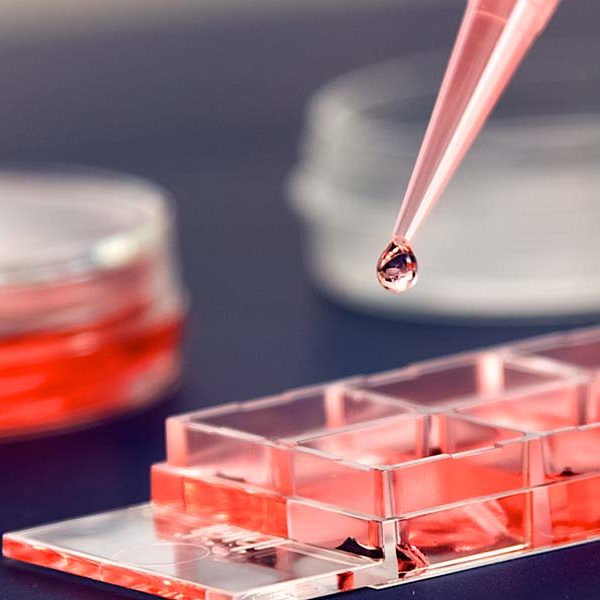A collaboration between UpNano and Xpect INX will allow users to directly print structures containing living cells, from the nanometer scale to the centimeter scale. UpNano’s latest printer uses a specialized hydrogel that mimics extracellular fluid, keeping cells healthy and alive during the print process and afterwards.
The NanoOne Bio is a bioprinter based on UpNano’s NanoOne two-photon polymerization printer. Two-photon polymerization (2PP) is a process that relies on a light-sensitive resin that only hardens at a point when it absorbs two photons at the same time. Because it hardens at specific places and stays liquid everywhere else, 2PP can make very complex structures on the nanometer scale. In 2019, UpNano developed the NanoOne printer, with print speeds fast enough that it can print on the centimeter, millimeter, and micrometer scales in only a few hours. UpNano researchers found that the printer’s powerful 780 nm red light laser isn’t harmful to living cells, and the printer’s fast writing speeds put less stress on living cells.
The NanoOne Bio prints in a hydrogel that UpNano co-developed with Xpect INX. Currently, Xpect INX has a whole range of bioinks, but this hydrogel is the only commercially-available resin that lets users embed living cells into 3D printed structures for biological applications. Because the hydrogel is made with a structure like the “extracellular matrix” that surrounds cells in a living body, users can take living cells directly out of a culture plate, embed it in the hydrogel, and load it into their printer.

Cells can be taken directly out of a 2D tissue culture and added into the new hydrogel (Image via UpNano).
“The hydrogel mimics the natural cellular environment and is biodegradable, thereby allowing the cells to gradually substitute the material with newly formed tissue,” said Jasper Van Hoorick, project lead at Xpect INX.
This has important implications for biomedical and pharmaceutical research. Today, we generally test drug interactions in 2D cell cultures like petri dishes, but a 2D environment means that researchers aren’t seeing all the communication between the cells that would happen in living tissue.
“Cells growing in 2D on a culture plate on standard growth media encounter a far from natural physical environment and a lack of interaction with surrounding cells in all directions, as observed in living tissues”, said UpNano co-founder Denise Mandt.
Having 3D structures printed from real cells will let researchers make “labs-on-a-chip”, or entire laboratory processes onto chips a few centimeters across. In this case, that means extracellular environments that mimic living tissues, and give researchers a better idea of how drugs might act on normal human cells. And because the NanoOne prints very quickly, those environments can be printed rapidly on the centimeter scale.
Subscribe to Our Email Newsletter
Stay up-to-date on all the latest news from the 3D printing industry and receive information and offers from third party vendors.
You May Also Like
Precision at the Microscale: UK Researchers Advance Medical Devices with BMF’s 3D Printing Tech
University of Nottingham researchers are using Boston Micro Fabrication‘s (BMF) 3D printing technology to develop medical devices that improve compatibility with human tissue. Funded by a UK grant, this project...
3D Printing Webinar and Event Roundup: April 21, 2024
It’s another busy week of webinars and events, starting with Hannover Messe in Germany and continuing with Metalcasting Congress, Chinaplas, TechBlick’s Innovation Festival, and more. Stratasys continues its advanced training...
3D Printing Webinar and Event Roundup: March 17, 2024
It’s another busy week of webinars and events, including SALMED 2024 and AM Forum in Berlin. Stratasys continues its in-person training and is offering two webinars, ASTM is holding a...
3D Printed Micro Antenna is 15% Smaller and 6X Lighter
Horizon Microtechnologies has achieved success in creating a high-frequency D-Band horn antenna through micro 3D printing. However, this achievement did not rely solely on 3D printing; it involved a combination...





























